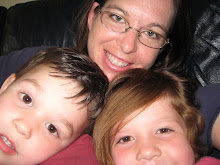For this read aloud, I will use Mufaro’s Beautiful Daughters by John Steptoe. The story is about two daughters, one loving and kind, Nyasha, and the other greedy and selfish, Manyara, who vie for the proposal of the king. I will read it to Mrs. Sevigny’s first grade class at Wheelock Elementary. Parts of this story sound a lot like Cinderella, so I want to see if any of the children find the connection between the two folktales.
Before I even read the book one little boy surprised me with a text to text connection. As soon as he saw the cover he said, “Ooh, ooh, that’s a Jesus book.” What do you say to that? On one hand, it’s true. Part of the story parallels the Biblical parable of the sheep and the goats. As the daughters travel independently to meet the king, they each encounter a hungry boy and an old woman. Manyara treats them with contempt and hostility while Nyasha treats them with compassion. The king, who is also the hungry boy and the old woman, knows the heart of each daughter by how she treated him. I saw the connection as soon as I read it, but I thought it would be over the heads of 1st graders. Not wanting to get sucked into a theological discussion, I said, “Oh, you think so?” and changed the subject.
The reading didn’t quite go as I had planned. Mrs. Sevigny had forgotten that I was going to read, but she really wanted me to do it, so my read aloud cut into their outside play time. Since the kids were anxious to get out, I didn’t spend as much time as I should have setting up the story. Several of the students had a hard time following the plot, because it is an African folktale with native names. They kept getting stuck on which daughter was which instead of hearing the action of the story. If I had to do it again, I would spend time discussing the girls’ names, personalities and physical characteristics before reading the story.
I did ask them to be thinking about parts of the story that sound like other stories they know, but most of them didn’t get it. When I got to the part where the king asks for all of the most beautiful and worthy daughters in the land to be brought to the castle, I asked the class if they knew any other stories that were similar. Only one student responded appropriately. She surprised me, because she wasn’t thinking about Cinderella, but about Shrek. It was a completely valid text to text connection that I had not thought of on my own. I had intended to spend a little bit of time explaining the similarities between Mufaro’s Beautiful Daughters and Cinderella, but I could see that I was on the brink of completely losing about half of the class, so I just let it go.
I was a little bit disappointed with this read aloud. I wasn’t as well prepared as I thought I was, and I didn’t have as much time as I would have liked. The students who actually paid attention to the story said that they really liked it. One little girl even said it was her favorite. So I think the selection was appropriate, the delivery just wasn’t all that great.
Steptoe, John. Mufaro's Beautiful Daughters. New York: Scholastic, 1987.
Subscribe to:
Post Comments (Atom)

No comments:
Post a Comment